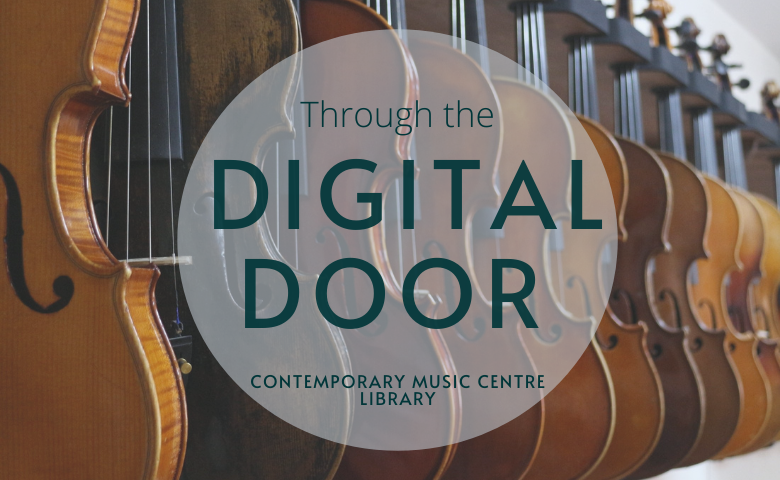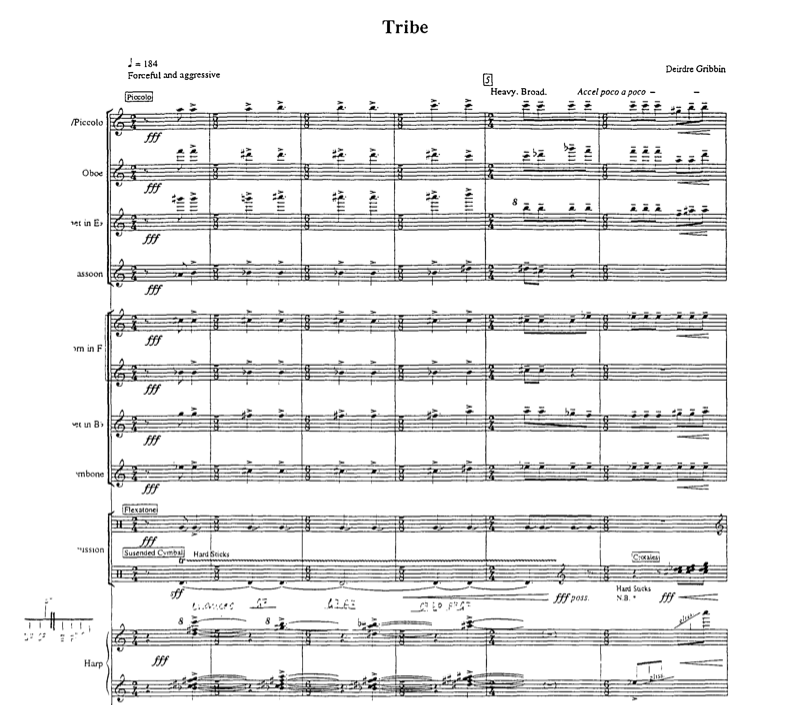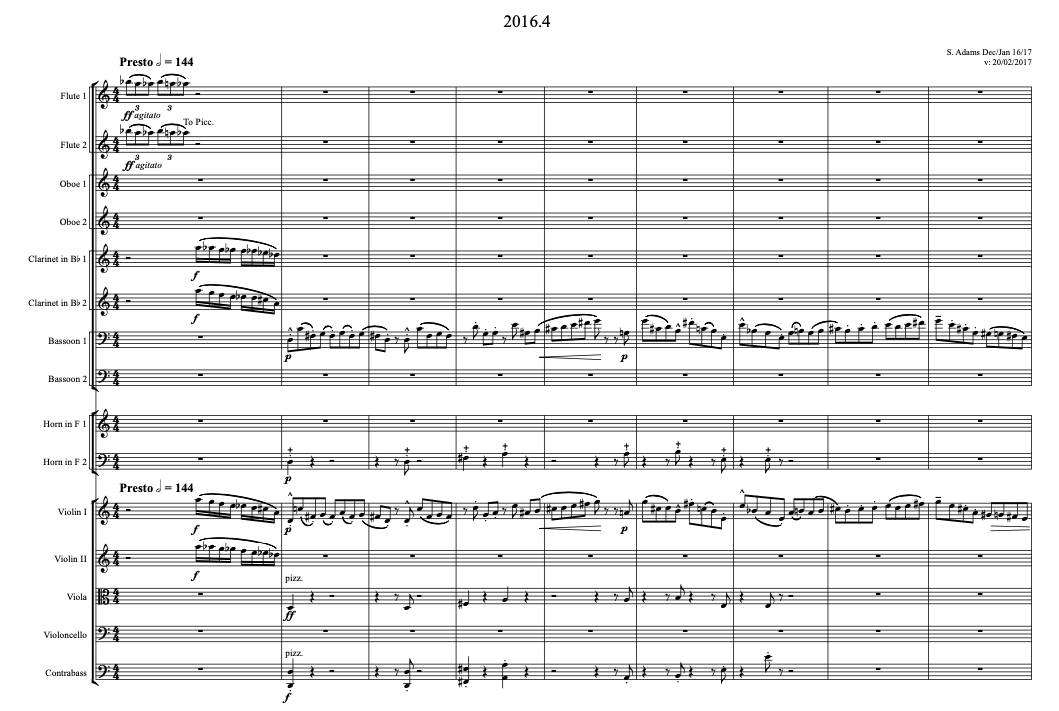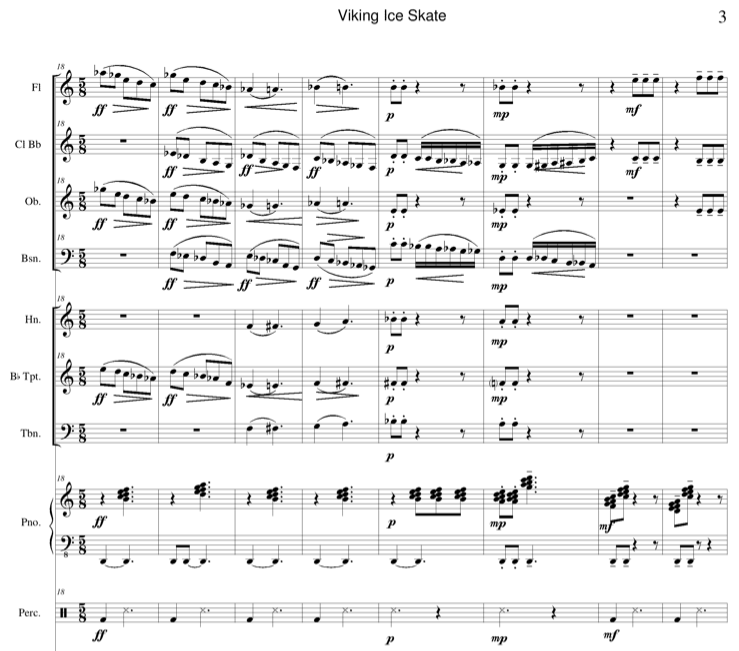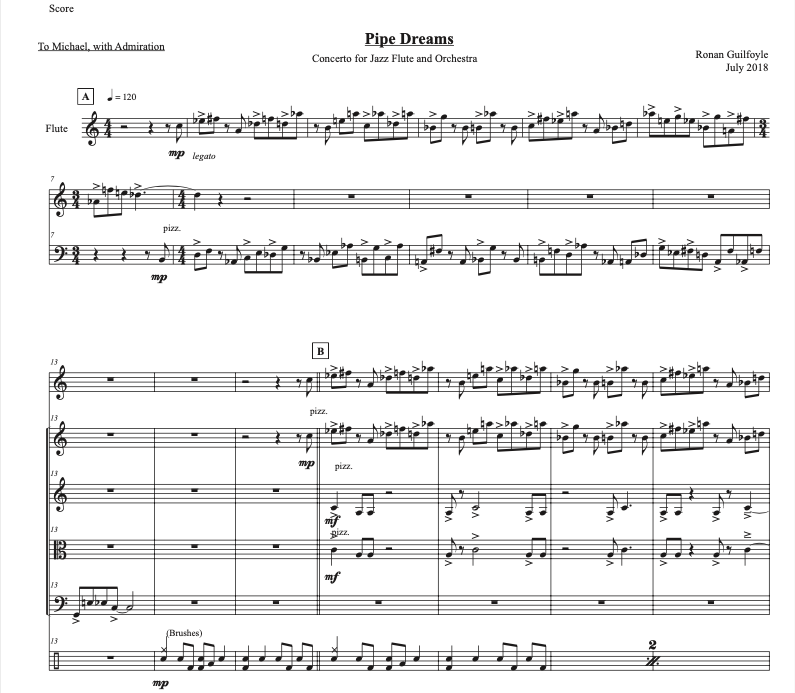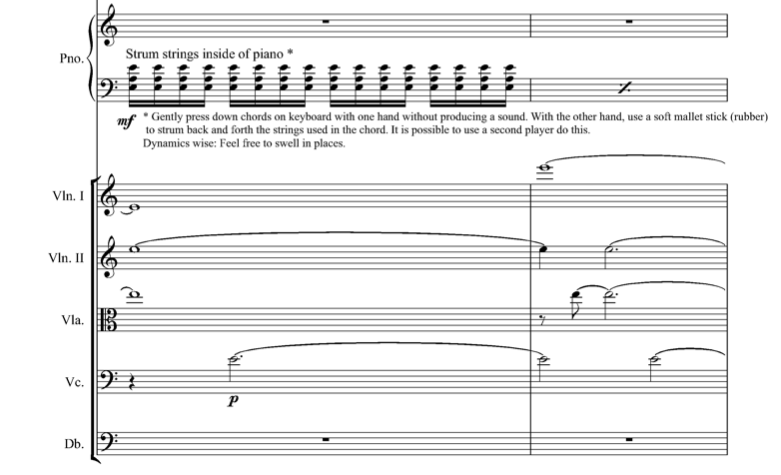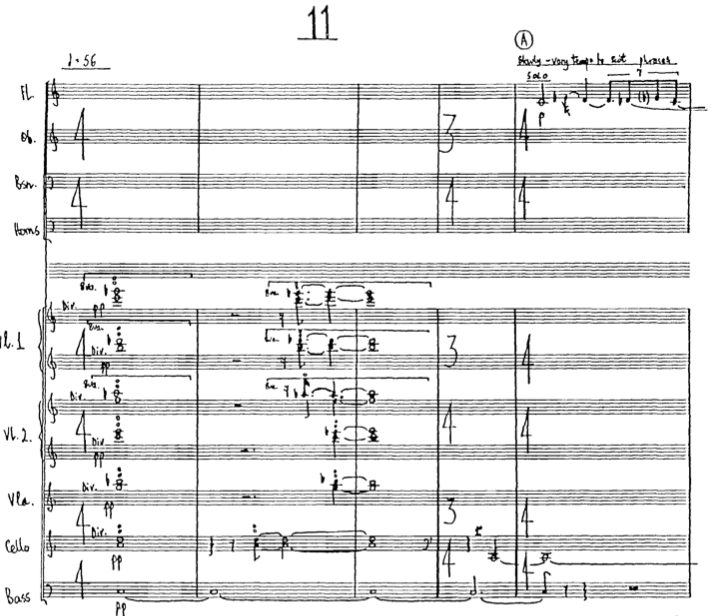Through the Digital Door: works for Chamber Orchestra in CMC's Library
As orchestras around the world begin to perform again, albeit with smaller forces, CMC's Library Coordinator Susan takes a look at works for chamber orchestra, with and without soloists. This week's Through the Digital Door is the first in a two-part feature exploring works for chamber orchestra in CMC's Library.
Seóirse Bodley: Chamber Symphony No. 1 (1964) 26'
This work was premiered by players from the Radio Éireann Symphony Orchestra at the 1964 International Rostrum of Composers in Paris and was conducted by the composer.
The music is designed for string quartet, flute, bassoon, horn, harp, piano and percussion and consists of four closely knit movements with an introductory Largo. It will be seen that this combination gives the composer scope for the designing of clear, highly coloured melodic lines. Indeed, there is about it a fascinating play of light and shade that may owe something to the French Impressionists, Debussy and Ravel.
Deirdre Gribbin: Tribe (1997) 15'
This work was commissioned and premiered by Ahèlas Ensemble in November 1997. The composer's programme note reflects the work's origins:
Tribe is a response from me to recent events in Northern Ireland. I grew up in Belfast and was only two years old when the troubles began. The situation there through my childhood, teenage and undergraduate years has undeniably affected thoughts and feelings; has made me who I am. I have never before acknowledged this in my music. I recall a letter from my mother dated 17.6.97: “...things are going to turn very nasty after yesterday’s dreadful murders: five wee children left without fathers. It is just too awful to think about... this terrible, sick country in which we are living...we are waiting from day to day."
Sebastian Adams: 2016.4 (2016) 4'
This work was commissioned by RTÉ lyric fm, during Adams' appointment as Composer in Residence. It was premiered by the RTÉ National Symphony Orchestra with conductor Gavin Maloney. 2016.4 represented Ireland at the International Rostrum of Composers in 2017.
When I began thinking about composing this piece, I had recently heard the premiere of Andrew Hamilton’s 'C', which I knew was going to be programmed alongside the premiere of my new piece. 'C' blew me away: it has a kind of joyful emotional power that is very rarely found in contemporary music. Around the same time, a conductor said something during a rehearsal I was playing in about the Marriage of Figaro being the greatest of Mozart’s operas, and that comment drew me back to it. I ended up taking this overture as a direct model, and although the end result hopefully doesn’t sound anything like Mozart, my aim is for '2016.4' to evoke the same feelings as its model: an irrepressible sense of the joy of being alive!
Fiona Linnane: Viking Ice Skate (2011) 5'
This work was commissioned by CoMA Limerick, with funds from the Arts Council. CoMA Limerick are a like-minded group of musicians, playing music by living composers and directed by Fiona Linnane.
Garrett Sholdice: Concerto for piano and small orchestra (2013) 23'
This work was commissioned by Irish Chamber Orchestra and premiered by the orchestra with pianist Michael McHale and conductor Gábor Tákacs-Nagy in RDS Concert Hall.
The first movement, ‘Soft Night’, is haunted by my memories of the city of Paris at dusk. The roots of the music lie in my chamber opera, Recueillement (’Meditation’) named after the poem by 19th-century Parisian poet Charles Baudelaire. (The title of this movement also comes from this poem.) A certain moment of eccentric, beautiful stasis in one of Haydn’s ‘Paris’ symphonies provided an important kernel of inspiration, too. The second movement, ‘Alap’, scored for piano and strings only, presents an alternative expression for some of the sentiments of the first movement. A late Mozart piano concerto was ringing in my ears as I wrote this, as well as the slowly unfolding 'alap' sections of North Indian 'ragas'. As much as beginning as an ending, this music is about a resolute, child-like concentration.
Ronan Guilfoyle: Pipe Dreams (2018) 20' (solo flute and chamber orchestra)
This work was premiered by flautist Michael Buckley and the Irish Chamber Orchestra in Glór Theatre, Ennis in October 2018.
Pipe Dreams is a concerto for jazz flute and chamber orchestra. It was specially written for Michael Buckley, someone who is renowned as a jazz saxophonist, but there is less awareness of his skills as a virtuoso flautist. The entire piece, (which features extensive improvisation from the flute as well as completely written passages), is based on the opening motif which is played alone by the flute, and immediately repeated in the pizzicato strings. This motif appears on multiple occasions, both in its original form and as the genesis for the lyrical melodies in both the second and third sections. The piece itself is played continuously but is broadly in three sections.
Irene Buckley: Miniatus (2009)
Miniatus is the Latin for 'damage'. I've always been interested in imperfect sound, so this piece begins very pure, simple and quite clear sounds, and becomes more distorted as the piece progresses.
Irene Buckley was interviewed by CMC's Jonathan Grimes in 2012, ahead of the performance of Miniatus at Crash Ensemble's Free State 7 concert.
John Buckley: Concerto for Chamber Orchestra (2001) 3'
This work was commissioned by the New Irish Chamber Orchestra and was premiered in January 1982 at the Dublin Festival of Twentieth Century Music in Trinity College Dublin. This premiere was conducted by Seóirse Bodley.
This work is a concerto for orchestra in the sense that the instruments are treated as soloists, many having elaborate cadenzas. Each of the fourteen string instruments has a separate part for much of the piece. The concerto is in five movements.
Donnacha Dennehy If he died, what then (2011-2012) 20' (voice and chamber orchestra)
This work was commissioned by St Paul Chamber Orchestra and premiered in St Paul, Minnesota with Dawn Upshaw (soprano) and conductor Stefan Asbury. The text used in this work is from Asenath Nicholson's Annals of the Famine in Ireland, published in 1851.
Asenath Nicholson’s book recounts in vivid detail the unfolding famine in Ireland in the years 1847-1849 as directly experienced by her. 'If he died, what then' concentrates on the story of the interaction between an old man (desperately seeking supplies for his family dying of starvation at home) and a government-appointed relieving officer, whose job it was to give out food to the starving.
Dennehy's chamber opera The Hunger also incorporates material from If he died, what then. His works are published by Schirmer.

